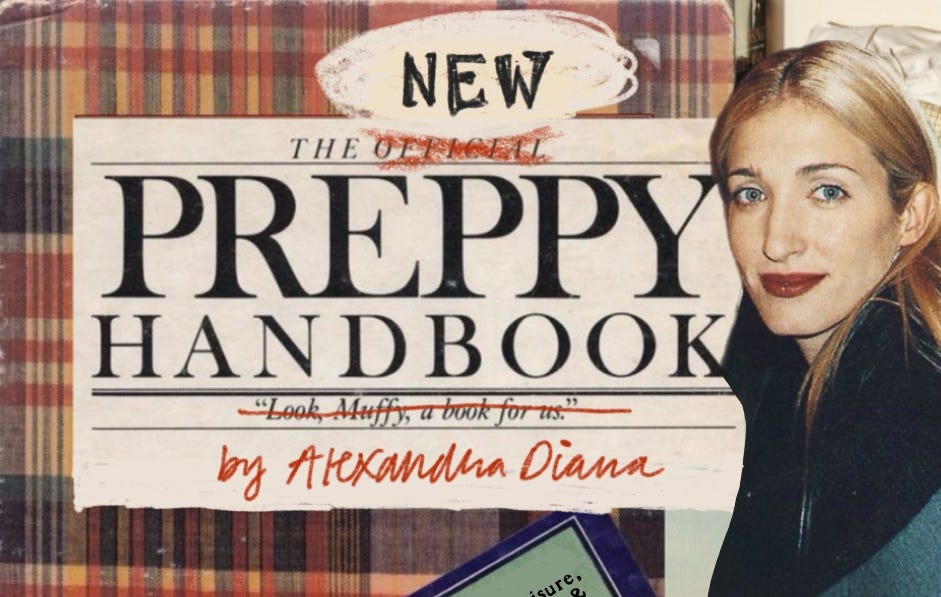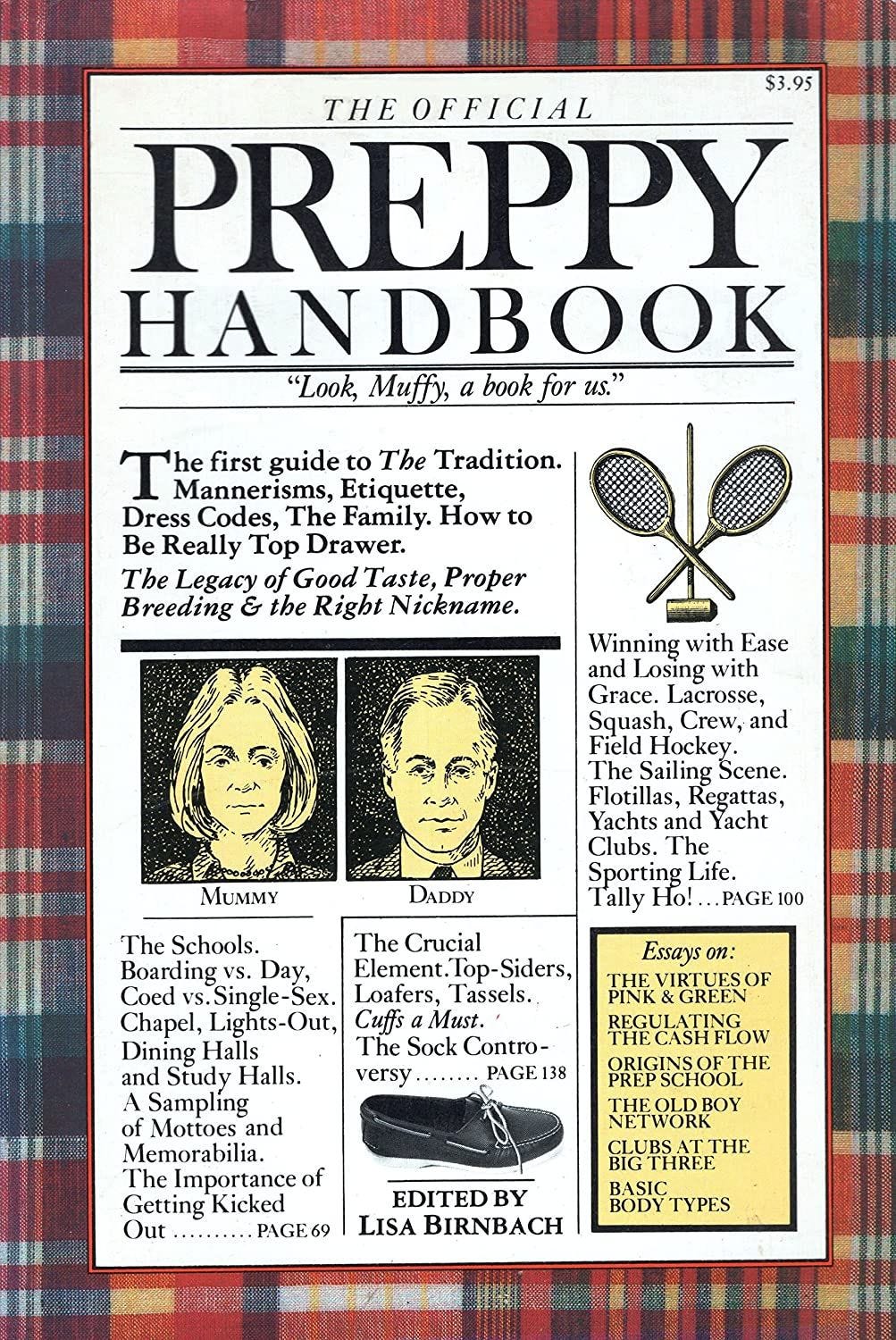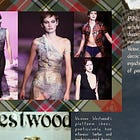The NEW! Preppy Handbook
the aesthetic of polished leisure, where style is crisp, collegiate, and bound by tradition.
“Preppy is not just a way of dressing; it’s a way of living.”
Lisa Birnbach, The Official Preppy Handbook
Preppy: the style that does not begin with individual taste, but with lineage.
The core stylistic elements of Preppy fashion are Inherited Pedigree, Heritage Emblems, the Paradox of Play, Gender Parity and Seasonal Rhythm.
Unlike aesthetics born from rebellion or subculture, Preppy’s foundation is order.
The Preppy aesthetic emerged not from individual taste, but from inheritance. It's signature elements, blazers, letterman sweaters, pearls, were and continue to be, passed down both literally and symbolically, boasting family wardrobes, school traditions, and vacations of leisure. To dress Preppy is to be admitted into a continuity, a lineage of institutions and enclaves that define the self. At its core, Preppy is the aesthetic of belonging, the uniform of the initiated.
Preppy fashion was born in the cloistered halls of the Ivy League during the early 20th century. At Harvard, Yale, and Princeton, students were obligated to wear uniforms that (somewhat) merged casual (I’m using this word loosely) comfort with understated (also, here) formality: button-down shirts, blazers, loafers, tartan. What began as ‘practical’ dress for the Ivy leaguers morphed into something more, a visible code of privilege, a marker of polish and pedigree.
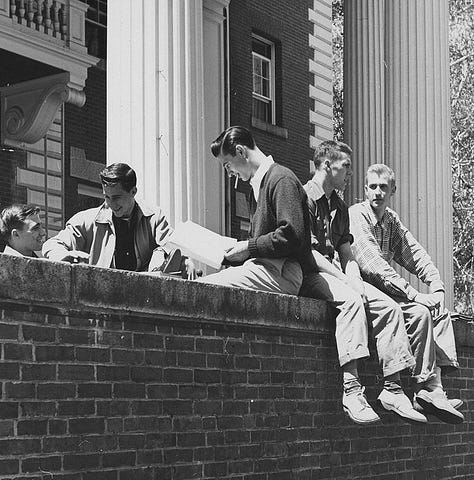
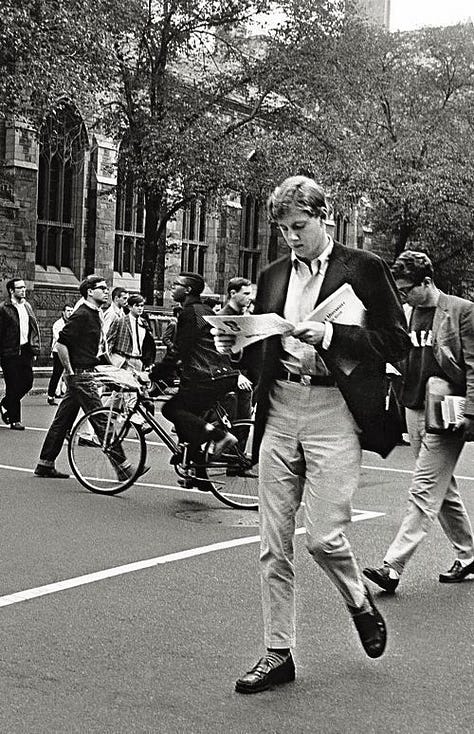
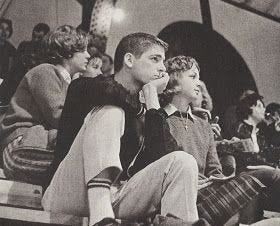
The first great text of Preppy was not written, but photographed. In 1965, the Japanese photobook Take Ivy documented Ivy League students on campus, capturing chinos, blazers, loafers, and striped ties in candid snapshots of daily life. For Japan, it was aspiration; for America, it was the immortalization of the Preppy image.
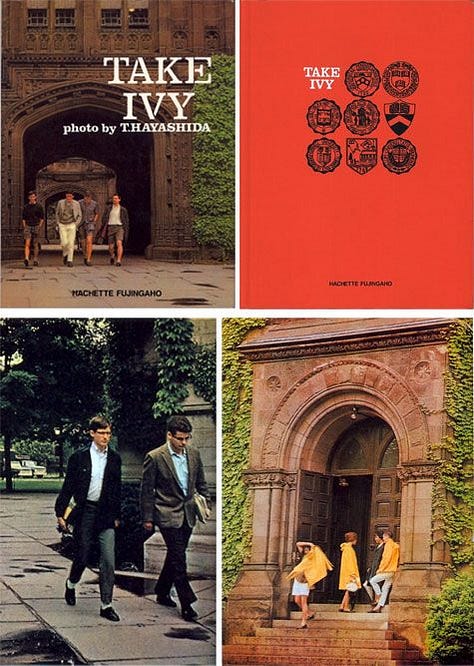
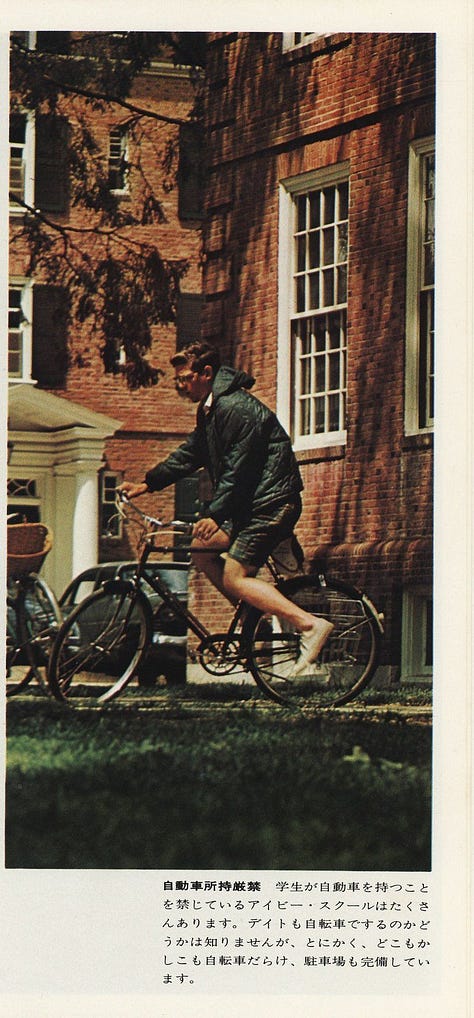
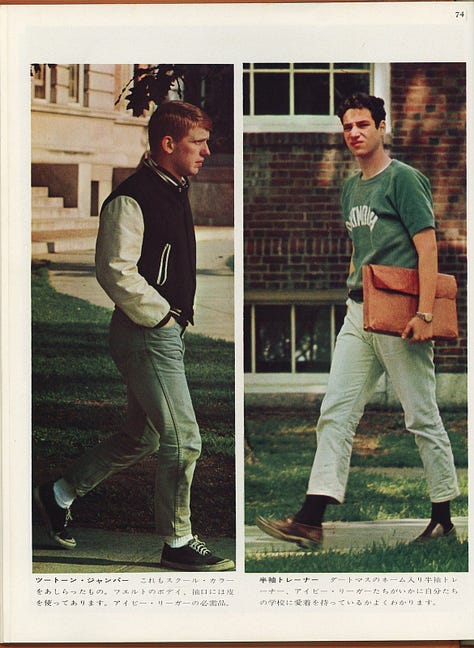
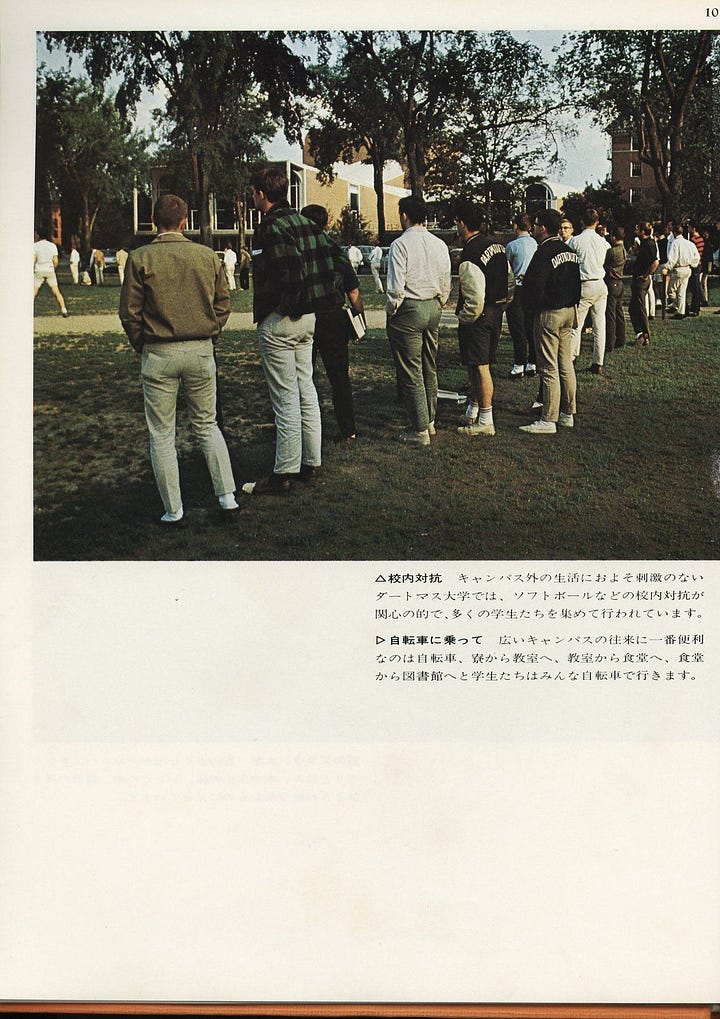
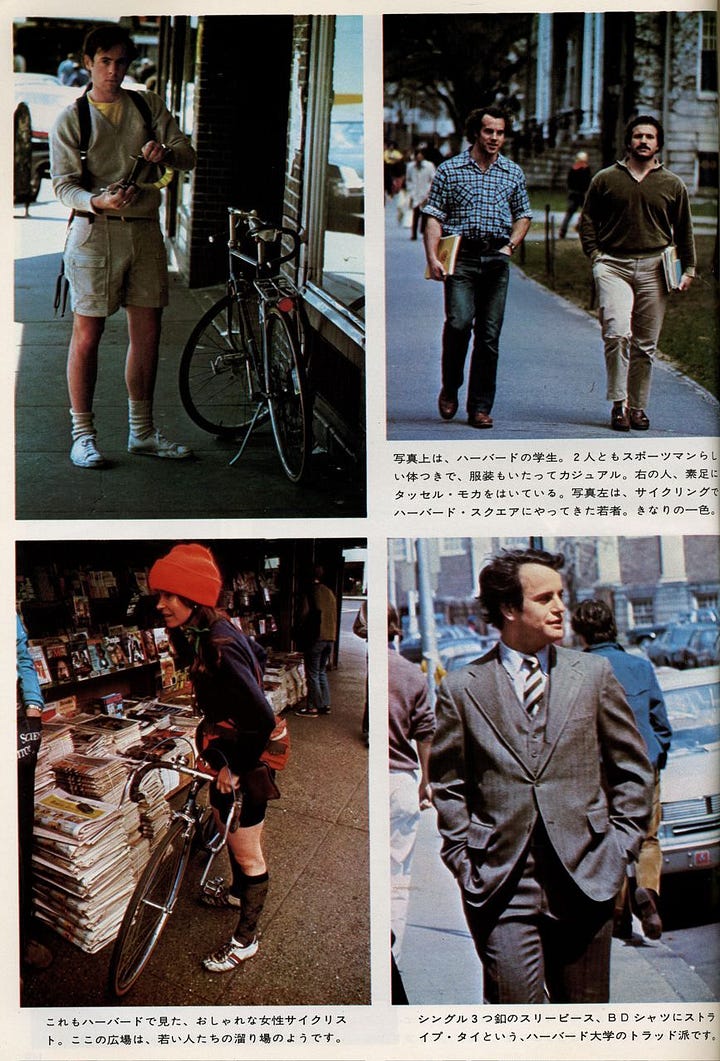
Ralph Lauren built upon this foundation and transformed it into empire.
Beginning in the 1970s, his Polo campaigns staged Preppy not as dress but as dynasty. Families posed like Slim Aarons portraits, gathered on estates in blazers and polos, on yachts in nautical stripes, at polo matches in equestrian whites. These ads turned Ivy League codes into global luxury.
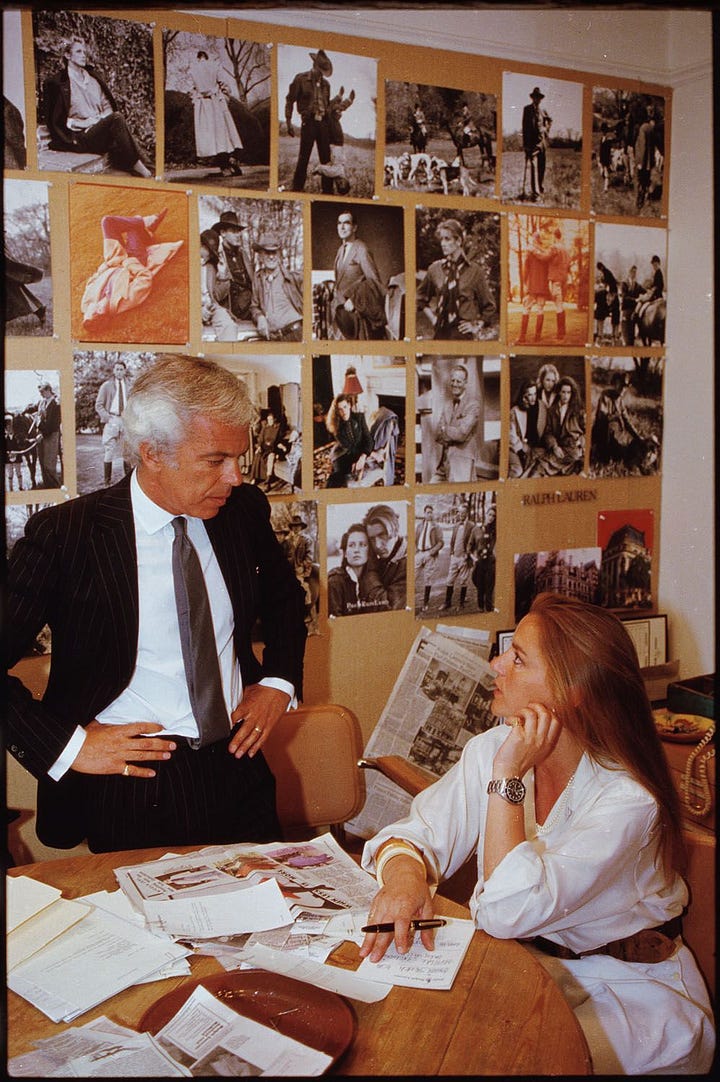
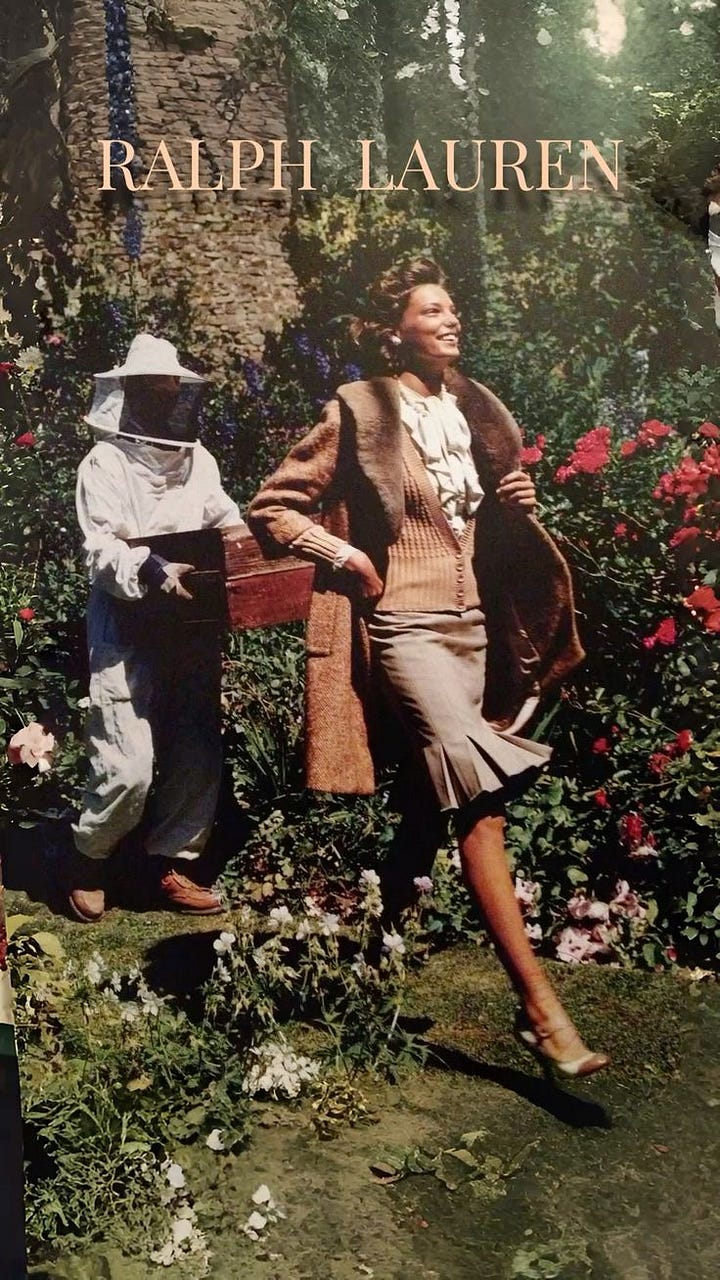
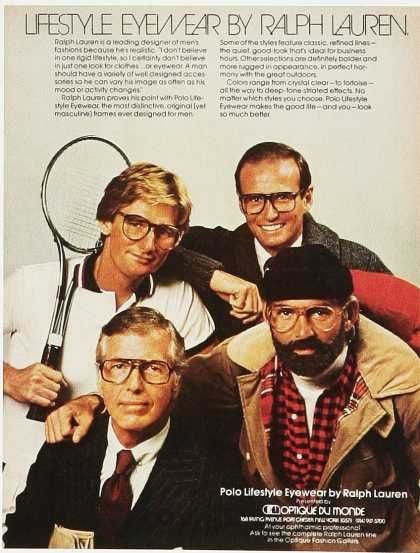
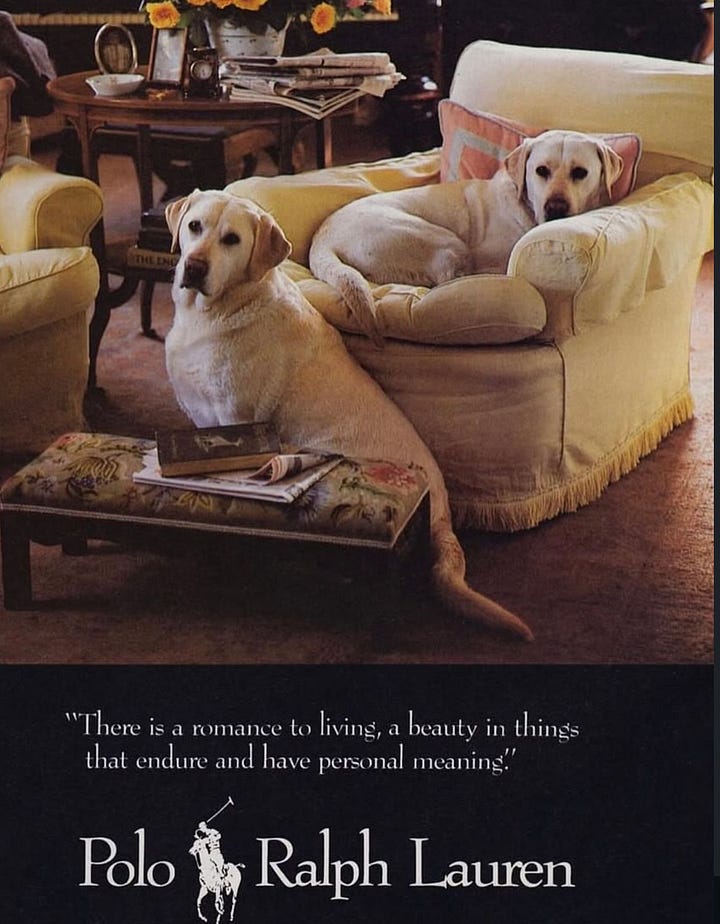
By the mid-century, Preppy moved beyond academia into the enclaves of New England and Palm Beach, where WASP culture translated it into a full aesthetic of leisure. Pearls, seersucker suits, pastel sweaters, and embroidered emblems became more than clothing and more of a statement: I am one of the elite. Preppy no longer dressed the student alone, it dressed the family, the country club, the summer colony.
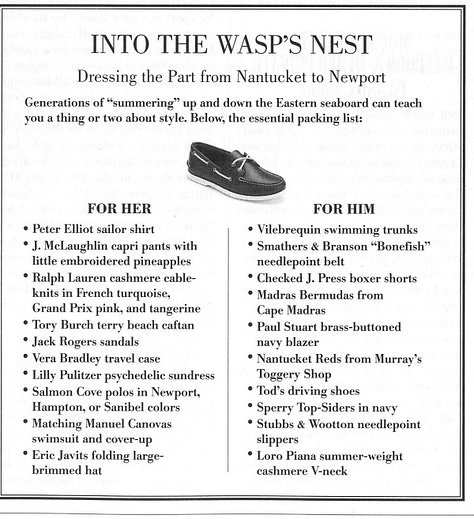
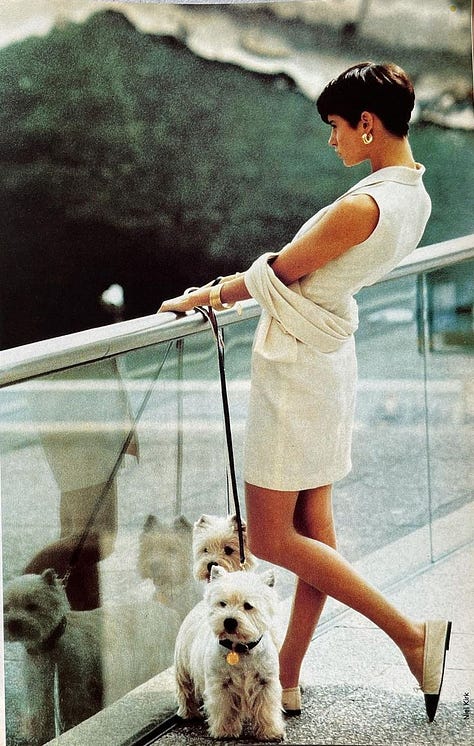
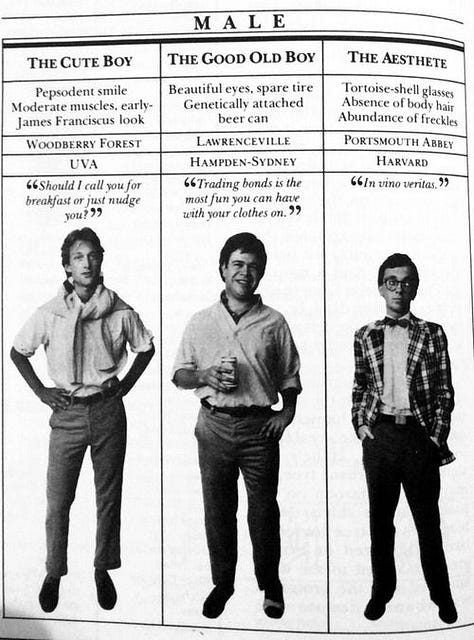
Lisa Birnbach crowned the aesthetic with her 1980’s publication of The Official Preppy Handbook, a satire that inadvertently canonized the look. What began as Ivy uniform and WASP enclave was now cultural identity, ironically making this look of exclusivity made visible to hte masses.
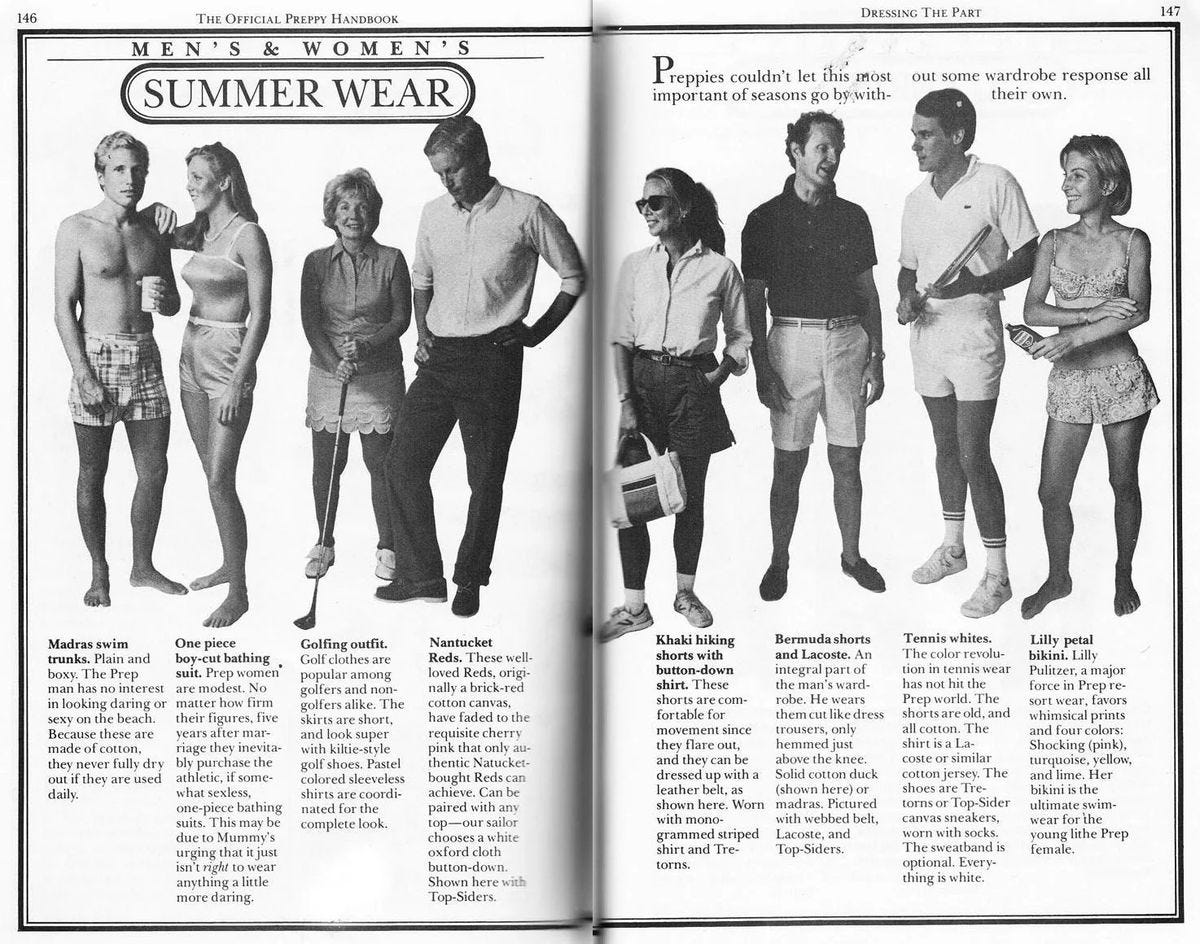
By the late 1990s, Preppy had entered its most commercial distortion. Abercrombie & Fitch, under Mike Jeffries, recast the aesthetic into a spectacle of collegiate athleticism and sexual provocation. Rugby shirts and polos were stripped of heritage, worn shirtless or half-undone. What had once been discipline softened by play was turned into a parody, Preppy was commodified, its pedigree flattened into provocation.
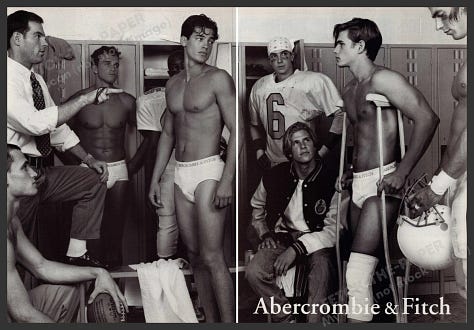
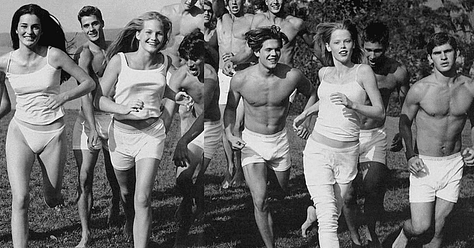
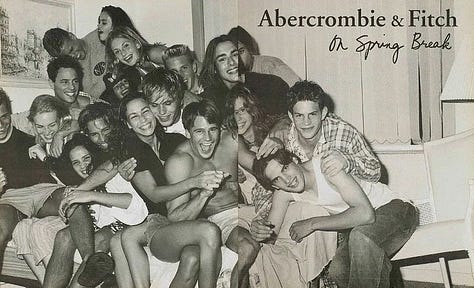
Preppy’s trajectory through these texts and campaigns reveals its paradox: an aesthetic born of restraint, exported as myth, and diluted in mass culture. Yet its endurance lies in the pieces that outlast the distortion of trends, the blazer, the loafer, the striped tie, these are the garments that still whisper their lineage, even when cheaply imitated.
Contemporary Preppy now splinters into distinct expressions:
Classic Ivy League, the most faithful form, designed by brands who have stood the test of time.
Southern Prep, the Palm Beach and Nantucket representation, resort-inspired, highly obtainable.
Sporty Prep, the continuation of lesiure as propriety, of sporting as more than athleticism but as membership.
Modern Rebellious Prep, the heritage codes deconstructed, oversized proportions, satirical crests, and playful layering, all of which reminds us that while Preppy can be mocked, it can never be erased.
It is important to note that while Old Money and Preppy share a vocabulary of tailoring, tradition, and refinement, they are not the same language.
Old Money conceals, it privileges discretion, understatement, and invisibility. Its power is quiet, its style muted, designed to pass without question. Preppy, by contrast, codifies. It thrives on recognition, on emblems and insignias that signal admission: the crest on a blazer, the stripe of a rowing jacket, the monogram stitched into cloth. To dress in Preppy is not to vanish into refinement, but to affirm membership in a visible order. Where Old Money hides, Preppy declares.
THE MOST ICONIC EMBODIMENT OF PREPPY IS CAROLYN BESSETTE-KENNEDY.
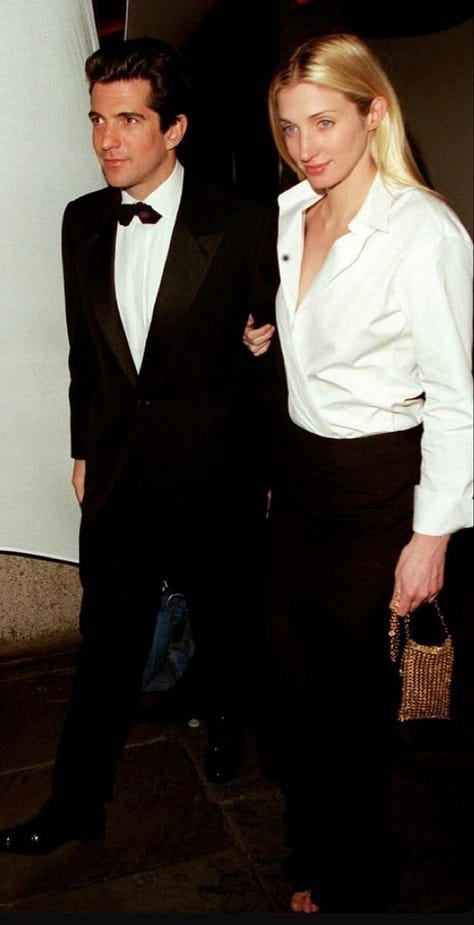
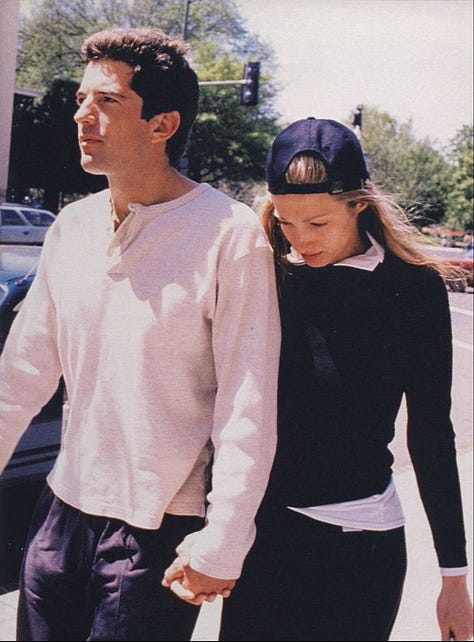
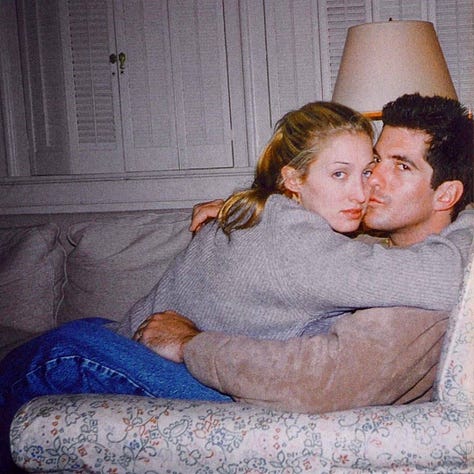
Far more than a minimalist muse, Carolyn distilled Preppy into its purest modern form. She is iconic not because she reinvented Preppy, but because she refused to. She proved that its endurance does not require spectacle, only fidelity to tradition. Her power was in restraint. She understood Preppy’s rhythm, cottons in summer, navies in autumn, wools in winter, and never abandoned its discipline. Never in excess, never over-bearing, she was elegance with a touch of whimsy.
THE BEST FICTIONAL EMBODIMENT OF PREPPY IS NICK CARRAWAY.
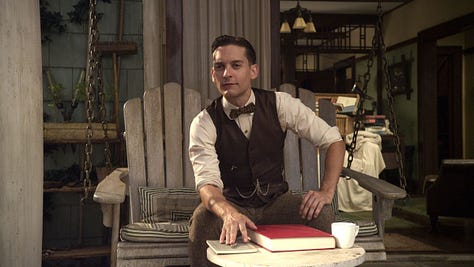
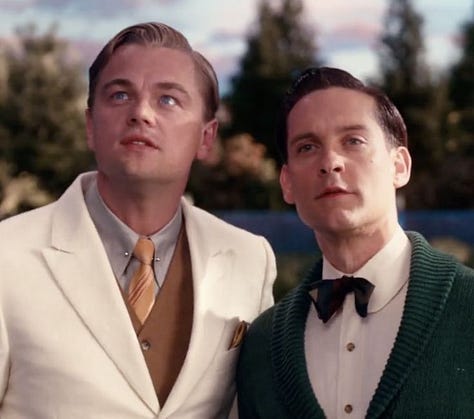
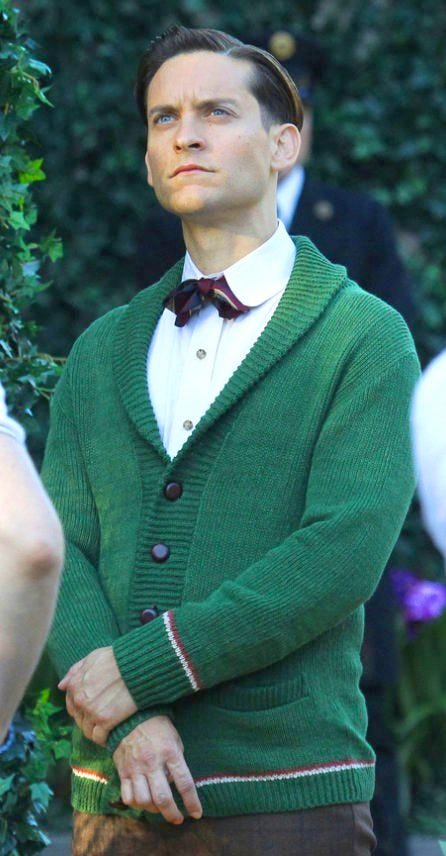
Nick Carraway, the narrator of The Great Gatsby, is less a character than a vantage point: the distilled essence of Ivy League polish and East Coast order. A Yale alumnus and bonds trader, he is never flamboyant, yet he has hte quiet assurance of someone formed by institutions, by money. His counterpart is Jordan Baker, the cool detachment of privilege, an athletic elegance that turns sport into status.
IN SUMMARY, LET’S REVIEW THE CORE COMPETENCIES OF THE PREPPY AESTHETIC:
1. Inherited Pedigree
Preppy clothing carries lineage, hand-me-down blazers, pearls, letterman sweaters. This is not style born of individual invention but of successino, of of the greatest markers is the ability to have what others do, and wear it at the same time.
2. Heritage Emblems
Crests, monograms, and insignias act as shorthand for affiliation. Unlike Old Money’s discretion, Preppy embraces visible markers, rowing stripes, embroidered initials, branded motifs, as proof of belonging.
3. Paradox of Play
In Preppy, play is performance, and its uniform insists on the dignity of leisure. The paradox reveals itself in contexts where sport is no longer sweat but spectacle, a game staged as refinement.
4. Gender Parity
Preppy is one of the few aesthetics with equally codified wardrobes for men and women. This parity does not collapse gender distinction but instead heightens it, each gender compliments the other in harmony. Everyone goes together very well, its as if they dress with the opposite sex at the forefront of their mind.
5. Seasonal Rhythm
Few aesthetics are as tethered to seasonality, where clothing functions as a ritual marker of time itself. Preppy moves with the calendar: seersucker in summer, tweed in autumn, cable knits in winter, pastels in spring. To dress Preppy is to affirm one’s place not just in a tradition, but in a rhythm that renews itself year after year.
Finally, Preppy fashion thrives not in rebellion, but in order, a language of discipline softened by play.
To embrace Preppy is to step into order: not fashion as invention, but as inheritance. It is a style that commands recognition through repetition, polish, and visible belonging. Neither rebellion nor radicality, but continuity made visible.
“Can’t repeat the past? Why of course you can!”
Jay Gatsby
With great personal aesthetic,
Alexandra Diana, The A List
Aesthetic Activation: Preppy
Make a list of the “uniforms” you’ve inherited — not just from family or school, but from the culture you move in every day. Now look at your wardrobe as a contract: what affiliations are you signaling through color, cut, or emblem? Ask yourself — do these choices represent belonging you choose, or belonging you’ve assumed?



